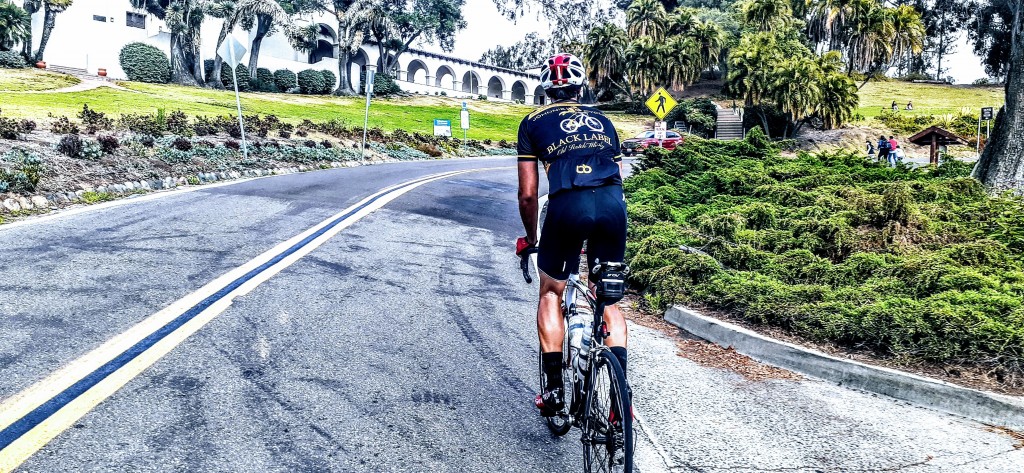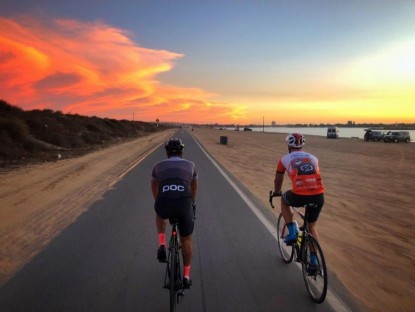Specialized S-Works Ares Review
Our Verdict
Compare to Similar Products
 This Product
Specialized S-Works Ares | |||||
|---|---|---|---|---|---|
| Awards | Best Overall Cycling Shoes | Best for All-Day Comfort | Great Value for All-Around Performance | ||
| Price | $425 List Check Price at Backcountry | $404.41 at Amazon Compare at 2 sellers | $200 List $200.00 at REI | $149.95 at Backcountry Compare at 2 sellers | $60 List |
Overall Score  |
|||||
| Star Rating | |||||
| Bottom Line | Among the best pro-level bike shoes on the market | Shimano added more comfort to this proven platform, offering performance that's a cut above the rest | This shoe excels on rides when comfort is the priority | Consistency across all of our testing metrics make this shoe an excellent value proposition | An inexpensive and serviceable cycling shoe for a fraction of the price |
| Rating Categories | Specialized S-Works... | Shimano S-Phyre SH-... | Quoc Escape Road | Giro Cadet | Venzo SPD-SL |
| Comfort (35%) | |||||
| Power Transfer (30%) | |||||
| Durability (20%) | |||||
| Weight (15%) | |||||
| Specs | Specialized S-Works... | Shimano S-Phyre SH-... | Quoc Escape Road | Giro Cadet | Venzo SPD-SL |
| Closures | BOA Li2 (two) | BOA Li2 (two) | Quoc Dial (one) | BOA L6 (one), Hook and Loop (one) | Hook and loop (three) |
| Width Options | Regular | Regular, Wide | Regular | Regular | Regular |
| Sole Stiffness (millimeter deflection at 25 lbs) | Not tested | 1.39 | 12.1 | 7.18 | 7.93 |
| Measured Weight (Pair) | 19.2 oz (size 45) | 16.72 oz (size 42.5) | 18.45 oz (size 42) | 18.66 oz (size 42) | 18.27 oz (size 43) |
| Size Tested (EU) | 45 | 42.5 | 42 | 42 | 43 |
| Outsole | Carbon fiber | Carbon fiber | Carbon-reinforced nylon | Carbon-reinforced nylon | Nylon |
| Outsole Ventilation | Toe | Toe and heel | Toe | None | None |
| Upper Material | TPU synthetic leather, Dyneema | Microfiber synthetic leather | PU synthetic leather | Synchwire synthetic | Mesh, synthetic leather |
| Reflective Hits | None | None | Upper | Heel | Heel |
| Cleat Adjustment | - 5 mm | +/- 5 mm | +/- 1.5 mm | 3-Bolt: none; 2-Bolt: 2 cm | None |
| Replaceable Toe/Heel Pads | Heel | Heel | Heel | None | None |
Our Analysis and Test Results
The Specialized S-Works Ares took a little convincing for us to come around. When you first slip them on, they feel a little crooked or unbalanced. The last has a slightly unusual shape, and the sock feels maybe too tight. Once you get your foot stuffed in, you'll probably fiddle around with the closure system and its untethered flaps. Once that's all handled and you're finally clipped in, it might take a few miles (at least an hour, really) before you start to feel yourself working with your shoes, pedals, and bike. We certainly went through an initial phase of resistance before we realized what was happening and how great the shoes really were. They remain high up on our shoes to grab for long days in the saddle.
Performance Comparison
Comfort
This is the key feature of the S-Works Ares in our view. While the shoe offers a lot in specs and features, it's the superior comfort that brings it together and makes it such an alluring choice. It's what sets it apart from most other premium racing shoes.
The central feature holding it all together is the snug bootie (Dyneema-reinforced sock). It creates a nice cushioned barrier and also solves the terribly annoying tongue issue that so many cycling shoes have. It's a little annoying trying to get your foot into and out of, but it's way worth it.
This shoe also uses a suite of design features, which Specialized calls Body Geometry, including:
Longitudinal Arch: A supportive structure molded into the outsole and paired with one of the three standard footbed shapes (can also be personalized by Specialized) to limit power loss as the arch of the foot compresses.Varus Wedge: A 1.5-millimeter wedge along the upper medial edge of the shoe to help stabilize and align the hip, knee, and foot. Specialized claims that it adds 10 seconds to your time of exhaustion. That's not a test we could reasonably run.
Metatarsal Button: A structure molded into the footbeds which is meant to relieve pressure on the metatarsal bones to limit hotspots, numbness, and aches.
We're not always convinced by companies' claims, but we put in a lot of miles in these shoes, and they really seemed to hold up. The “1% faster” and “10 seconds” longer stuff may be specious. We still stand by them as excellent, comfortable, serious performers worth a look.
The last important point that goes into the comfort of a shoe is how your foot fits into and stays in the shoe, which means fastening and securing. Their design is still patent-pending as of our testing, but it uses two BOA Li2 dials, which are nice, sensible two-way dials. They're affixed to two flaps that close over two other free flaps for a gentle closure, limiting hotspots while keeping the upper's superstructure secure. It's effective and comfortable.
This is a pretty standard design for high-end shoes, even the best road bike shoes. You get two fasteners in the form of two-way BOA Li2 dials that use a strong cable to pull together the sides of the upper. Two-way BOA dials have really become the baseline for premium road shoes.
One minor complaint here is that the flaps that form the closure system, while effective, do get caught up and tangled in the wiring. It's a minor inconvenience, but it can be annoying to fiddle with when you just want to get your darn shoes on and get out the door.
They also nailed the heel cup using their PadLock heel. It consists of a hard external cup with a line of thick padding around the inner collar that gently but firmly catches the heel. The result is a secure fit with limited heel slippage. It's another area that S-Works executes better than most of the other top-level road bike shoes.
Power Transfer
The S-Works Ares felt extremely efficient - among the best. It's worth noting at the outset that this typically comes at the expense of comfort, but there was no such sacrifice here. Another reason we were so taken by the shoes.
They use the S-Works FACT Powerline carbon outsole for top-end stiffness and all the power transfer inherent to most of the other premium carbon outsoles on the market. That doesn't necessarily set them apart from the flagship shoes from Shimano or Sidi. Where they stand out is in their Body Geometry design features. We outlined them under the Comfort section above. While they improve comfort through ergonomics, they also improve efficiency, which translates into power transference into forward motion. The Varus Wedge under the forward medial edge of the foot took a bit of getting used to, but seemed to especially improve the stroke and stability, making it a little easier to get after it on climbs and sprints.
The rest of the efficiency comes from the snug fit that reduces excessive wiggle and energy loss. The upper and Form Fit last work together so that the heel and midfoot are clasped while the toebox has enough room for the toes to splay in concert with the Metatarsal Button. The Dyneema-reinforced tongueless sock and PadLock heel come together to cradle the foot and limit both slip and energy waste.
Their closure design also does some solid lifting here. Two independent flaps fold over the top of the foot to pull the sole and upper together against the foot for a nice, sandwiched fit that improves efficiency and reduces rolling and discomfort.
Durability
The design of the Ares relies on a proprietary material called Dyneema. It's claimed to be similar to Kevlar, but stronger. It's used both in the tongueless sock and in the upper, where it's set between synthetic material and TPU.
The toe and outsole also have a layer of protection against abrasion which should hold up well against pedals and the road for a few hard seasons. They also have a replaceable heel pad, and we always love shoes with replaceable parts. It's sure to extend the shoe's life.
Weight
At 19.2 ounces in a pair of Men's size 45 (Euro sizing), these are among the lightest in the lineup. That's partially owing to the lean upper with its judicious use of heavier, reinforced materials. Specialized also claims that their FACT Powerline carbon outsole is not only their stiffest but also their lightest outsole, which will obviously go a long way to lowering weight.
Should You Buy the Specialized S-Works Ares?
The S-Works Ares isn't just a super-light, ultra-stiff, compliant road bike shoe that improves your pedaling efficiency, though it is all of those things. It's also an extremely comfortable shoe. As we've said elsewhere, the Deceuninck–Quick-Step professional team didn't choose this shoe without good reason. We think they can work on the closure and get the wires and flaps figured out and maybe add another layer between the heel and heel cup, but it's hard to improve on this model otherwise. We were quite happy riding in these, and we suspect most other riders will agree.
What Other Cycling Shoes Should You Consider?
Those with the means will get a lot out of the Ares – it comes at a premium because it delivers top-level performance. If you're shopping for shoes at this price point, you should certainly pit the Ares against the similarly high-performing Shimano S-PHYRE SH-RC903. But it's worth pointing out that these are some of the best shoes on the market. If you're an entry-level rider, or you're looking for a shoe that's a bit more reasonably priced, the Giro Cadet offers the best value in our test.

















